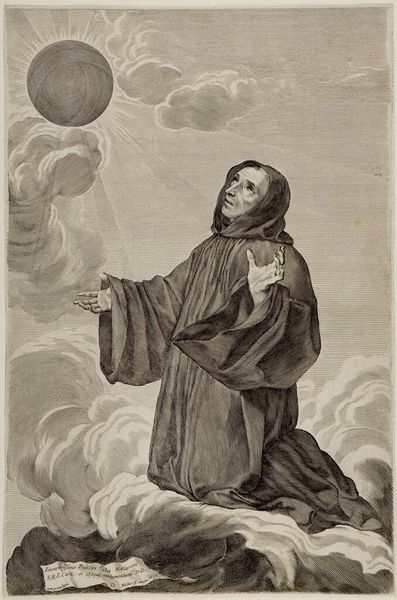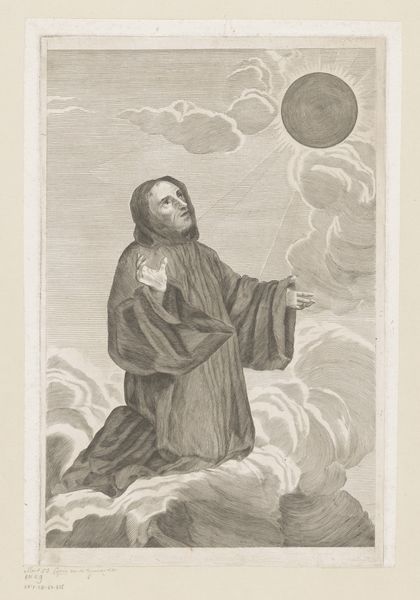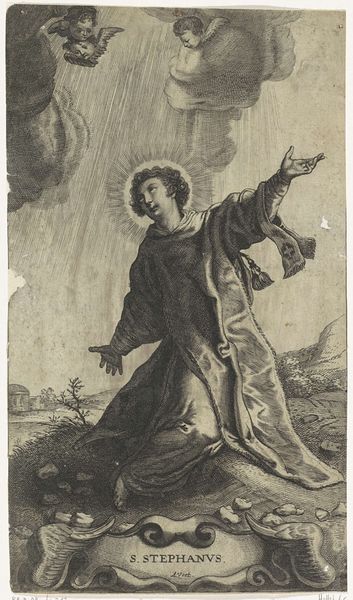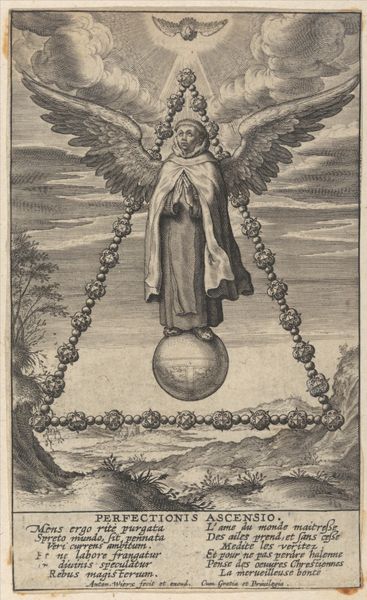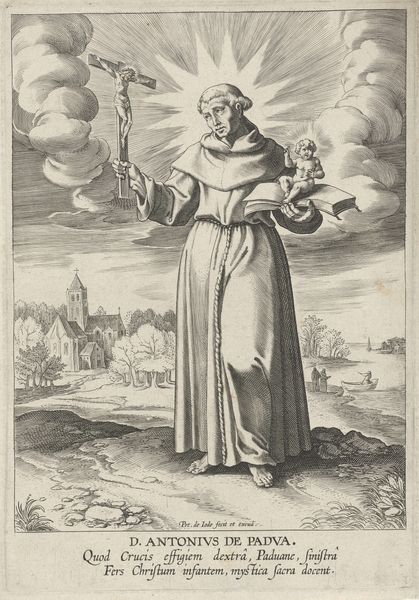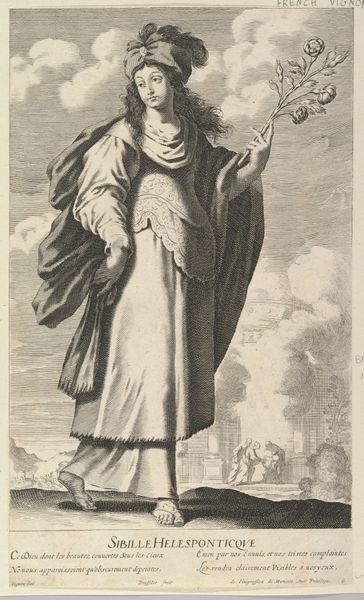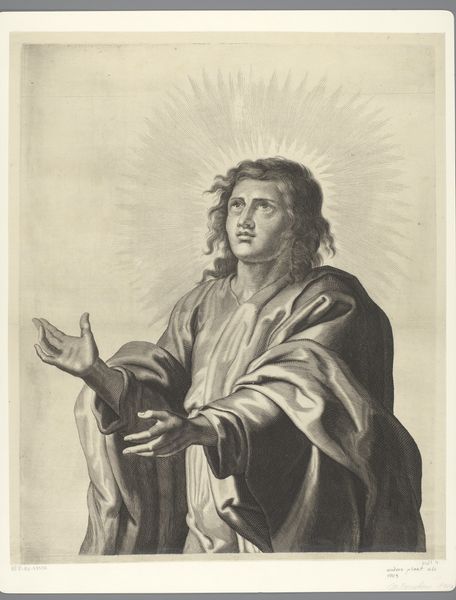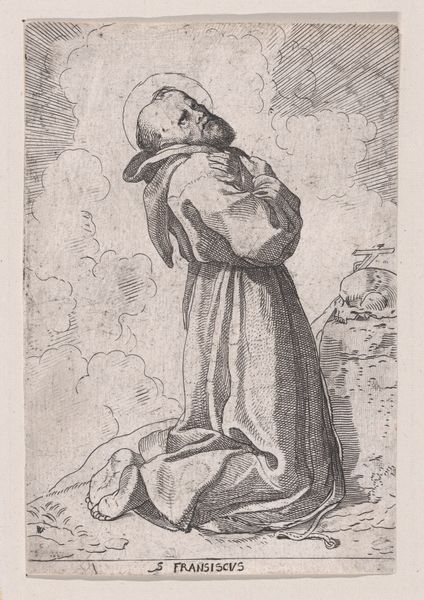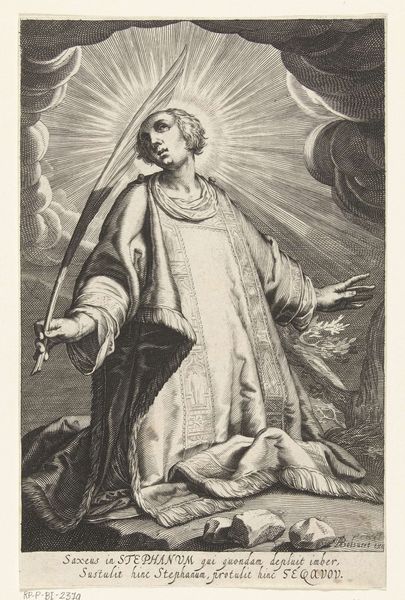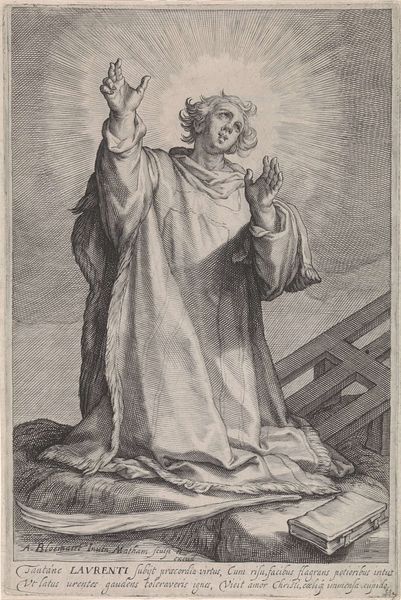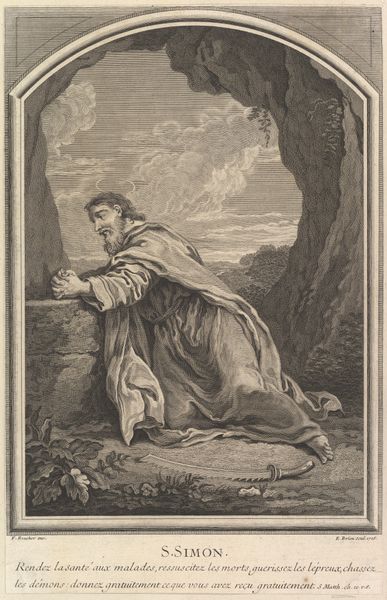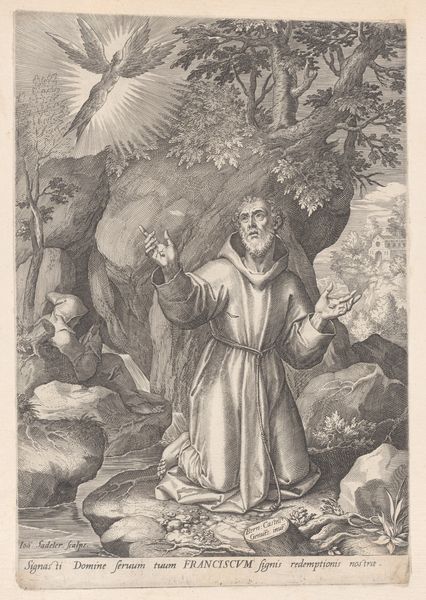
drawing, print, engraving
#
portrait
#
drawing
#
baroque
# print
#
figuration
#
history-painting
#
engraving
Dimensions: sheet: 17 1/2 x 11 9/16 in. (44.5 x 29.3 cm)
Copyright: Public Domain
Curator: Let’s turn our attention to "St. Benedict in Ecstasy," a 17th-century engraving by Claude Mellan, currently housed here at The Met. Editor: What strikes me immediately is the stark simplicity of line – it’s almost minimalist despite being Baroque. The figure is kneeling, bathed in light from above. A strong sense of drama, even ecstasy, is conveyed through posture and expression. Curator: Indeed. Mellan, known for his mastery of line engraving, depicts St. Benedict in a moment of divine connection. St. Benedict, an important figure for Western monasticism. The piece encourages us to think about the role of male spiritual figures and their relation to displays of divine power during this time. Editor: Notice how the use of parallel lines creates form and shadow? The meticulousness adds to a feeling of otherworldly precision. There is no cross-hatching. It is an exploration in how a single line creates form. Curator: Yes, and think about the Counter-Reformation context. The depiction of religious figures aimed to reaffirm faith and inspire awe. It wasn't merely artistic expression but a crucial form of political communication in a time of great social upheaval across the European landscape. How does it sit with the political views about piety? It speaks volumes of how gender and religious power become fused together. Editor: Fascinating, isn't it, how Mellan extracts such intensity from a seemingly limited technique? The light emanating from that radiating disc isn’t just light; it’s visually, the word given form. Curator: Right, it reminds me that considering social, cultural, and even economic history of the time allows us to interpret how a piece of art reflects, reinforces, and challenges norms and values around displays of masculine holiness. Editor: Thinking about its construction has given me an unexpected appreciation for how one single line is able to transform across light, movement, texture. Curator: Exactly. And viewing this within the historical and theoretical lenses expands our understanding to appreciate his social, cultural, gendered and political narrative.
Comments
No comments
Be the first to comment and join the conversation on the ultimate creative platform.
